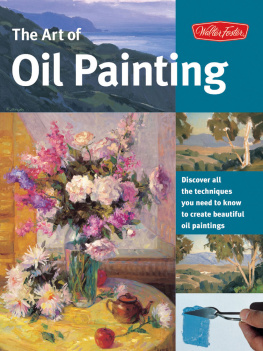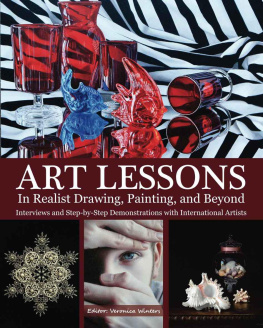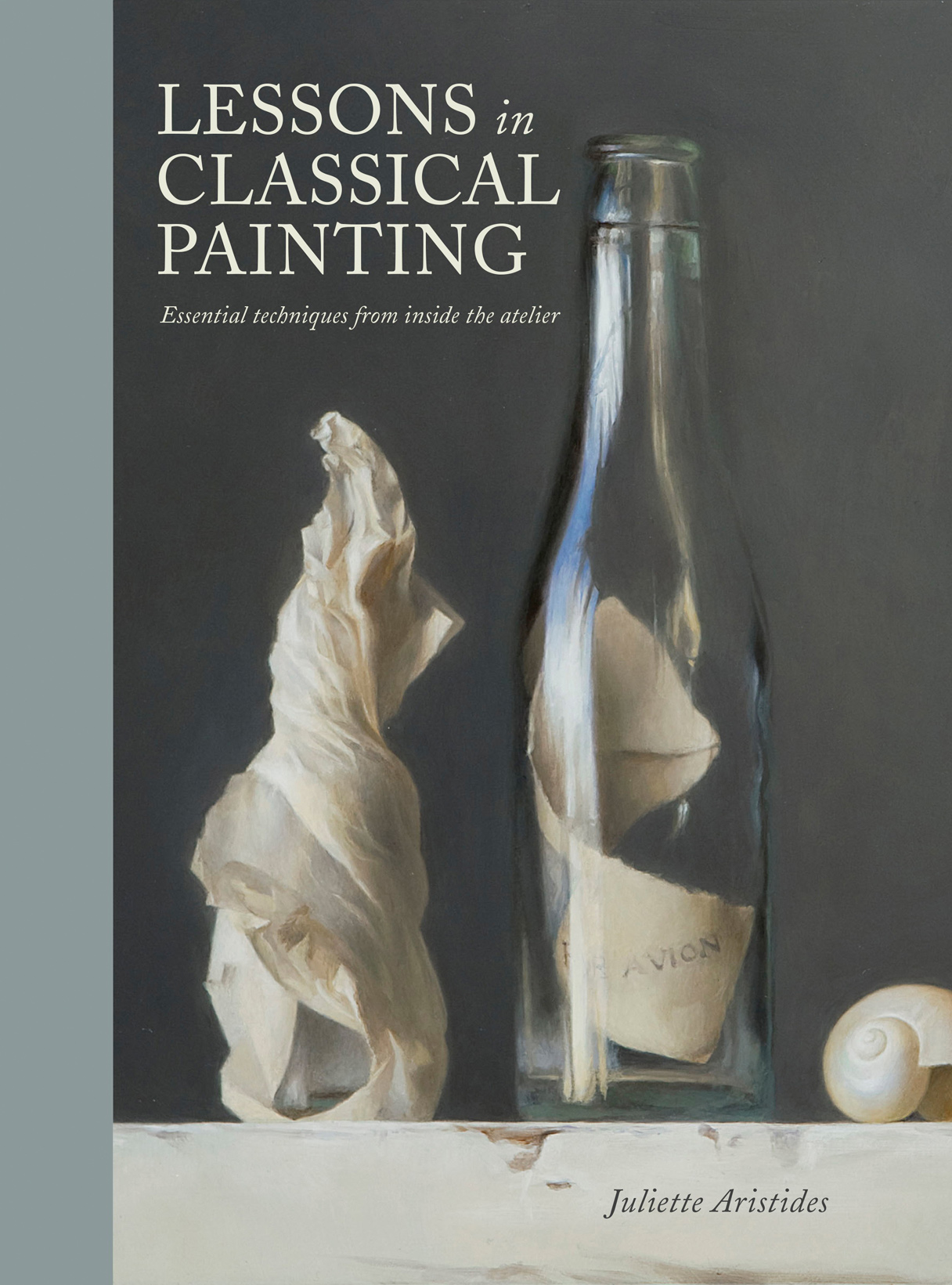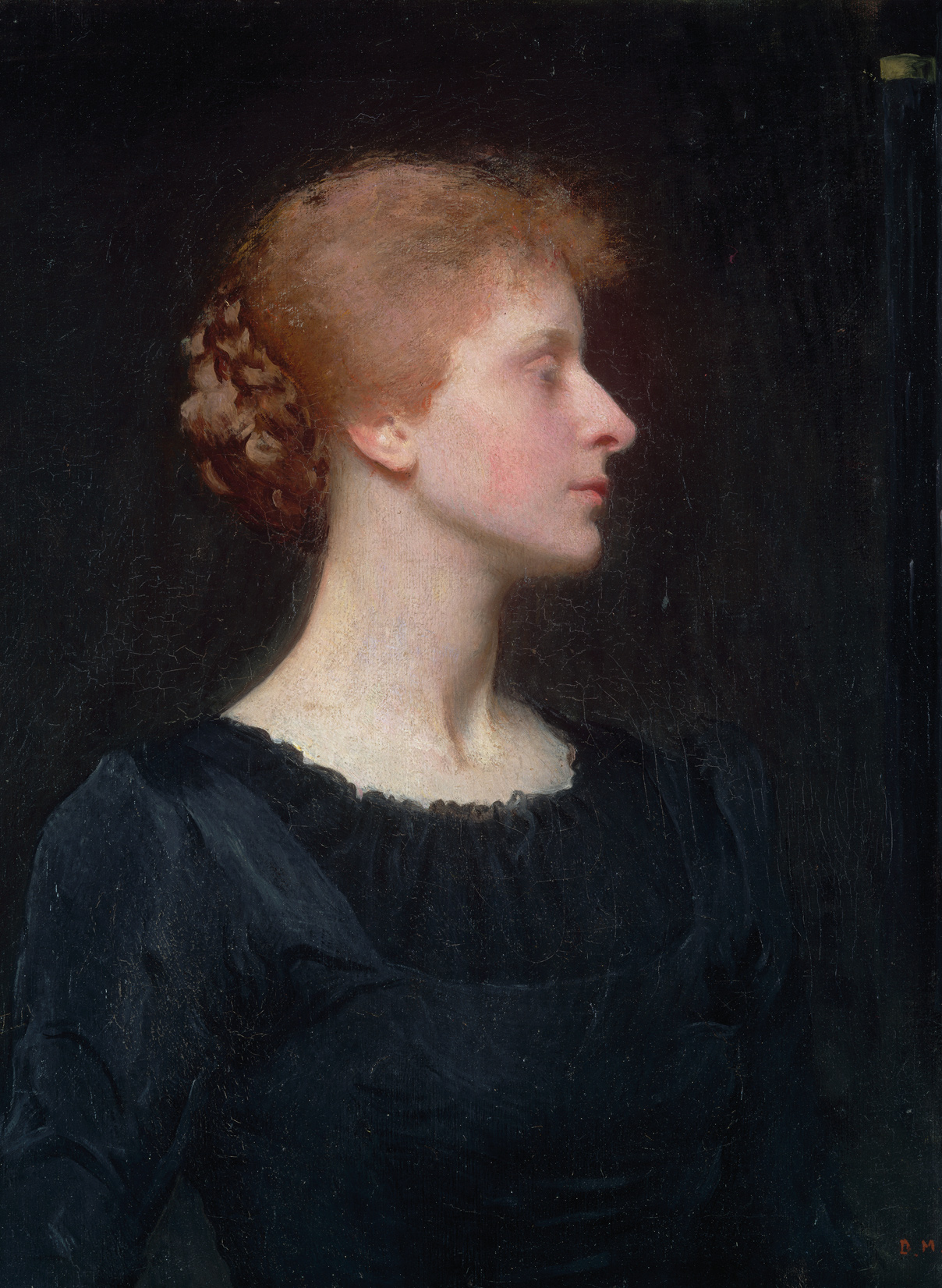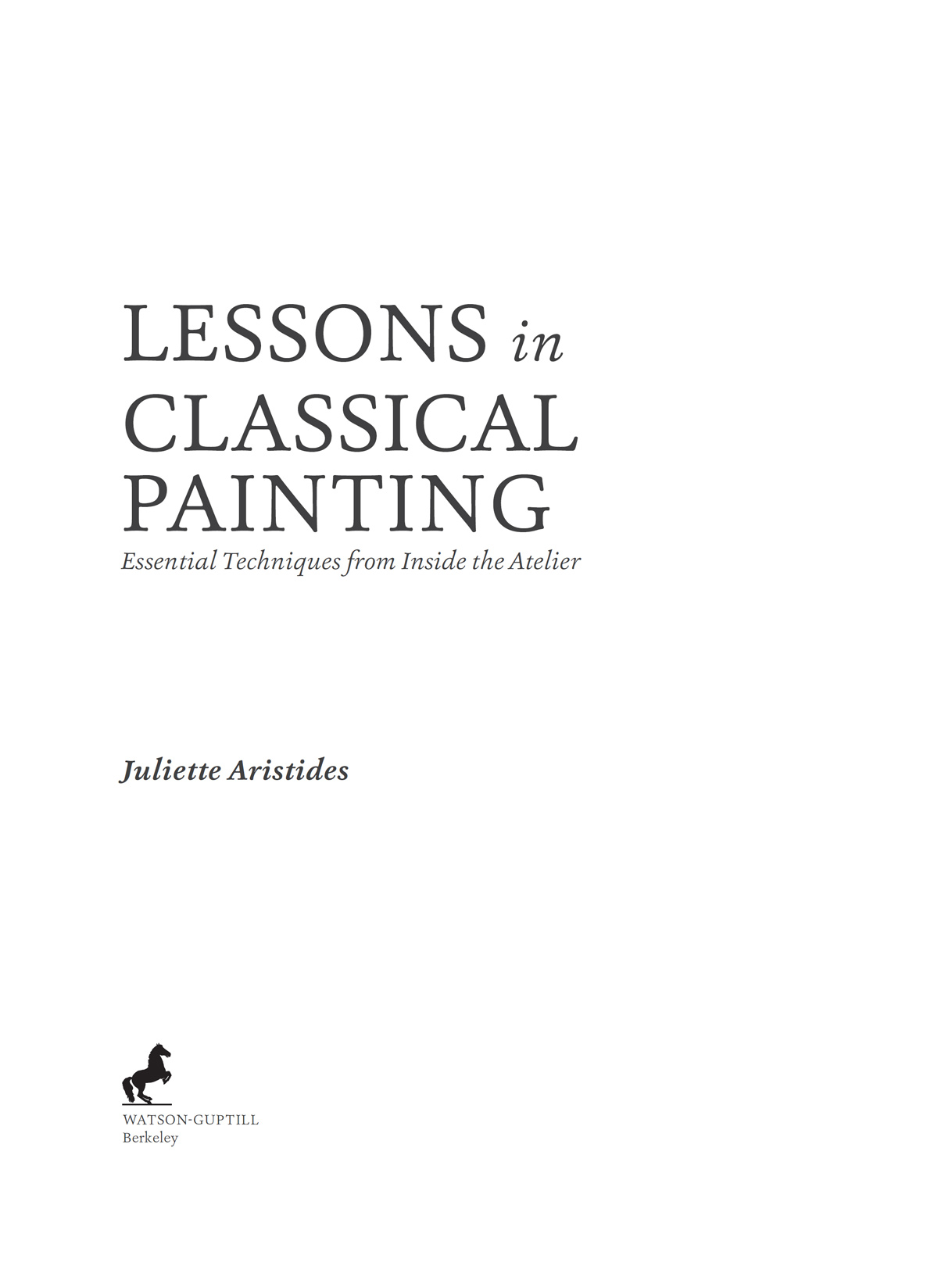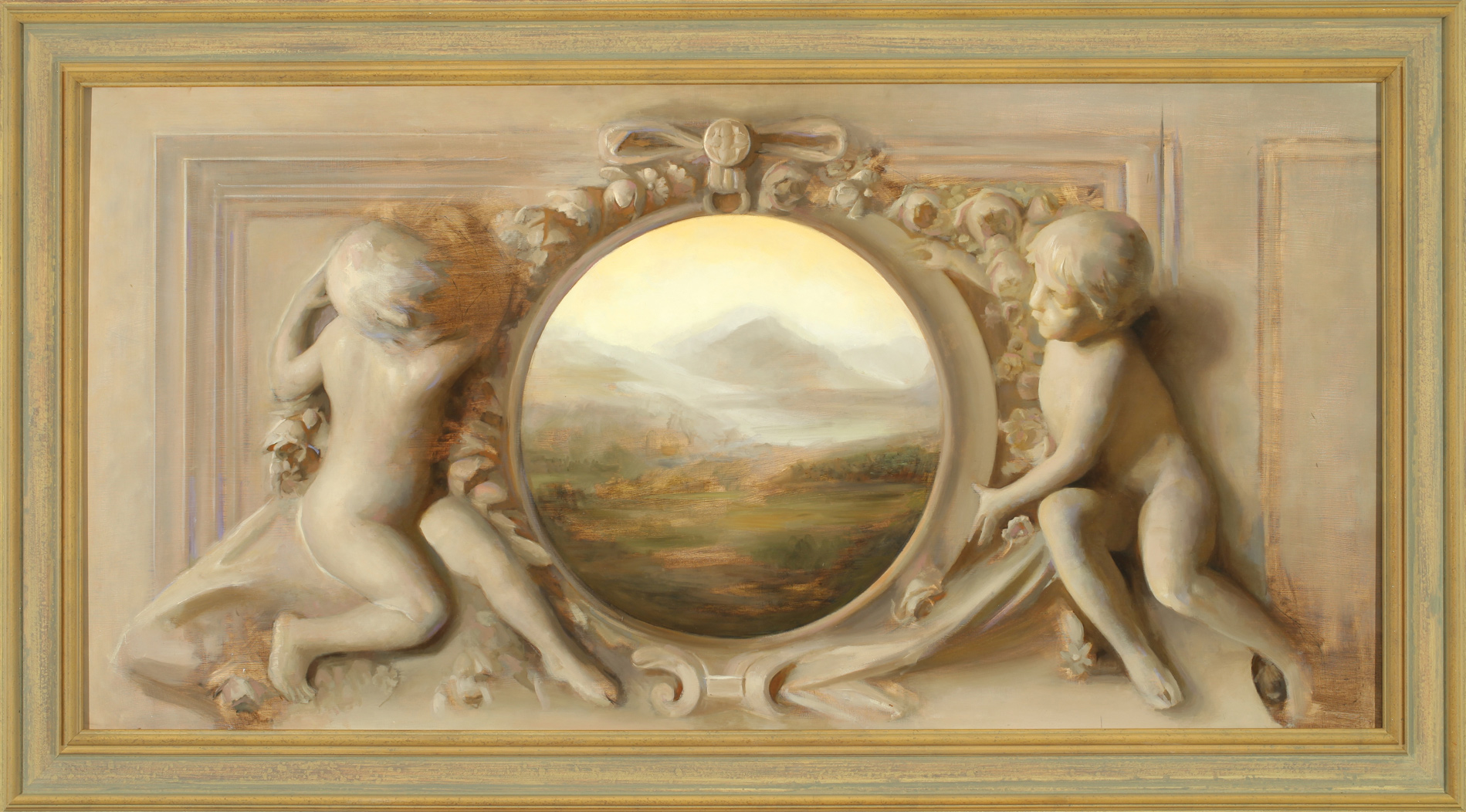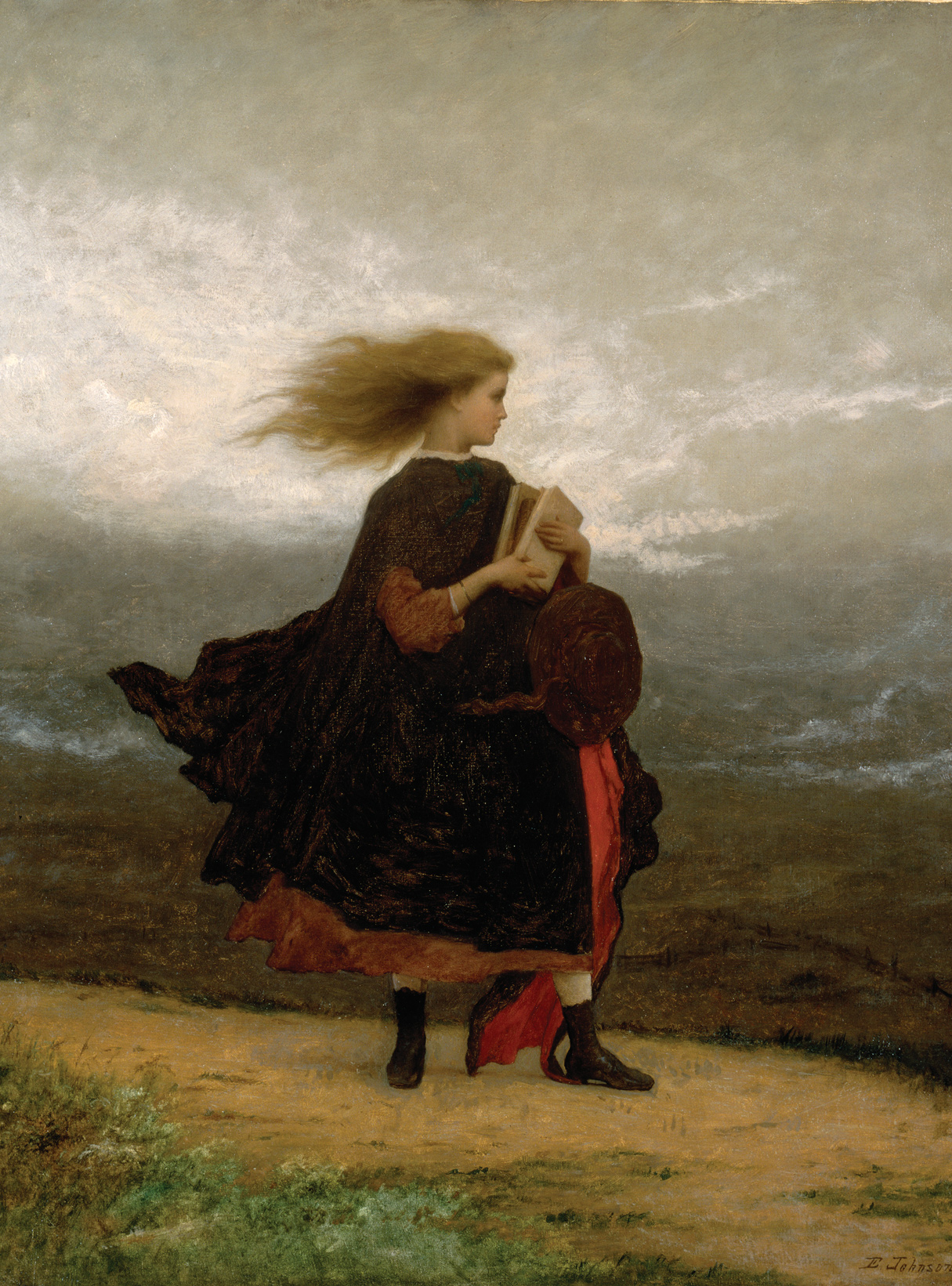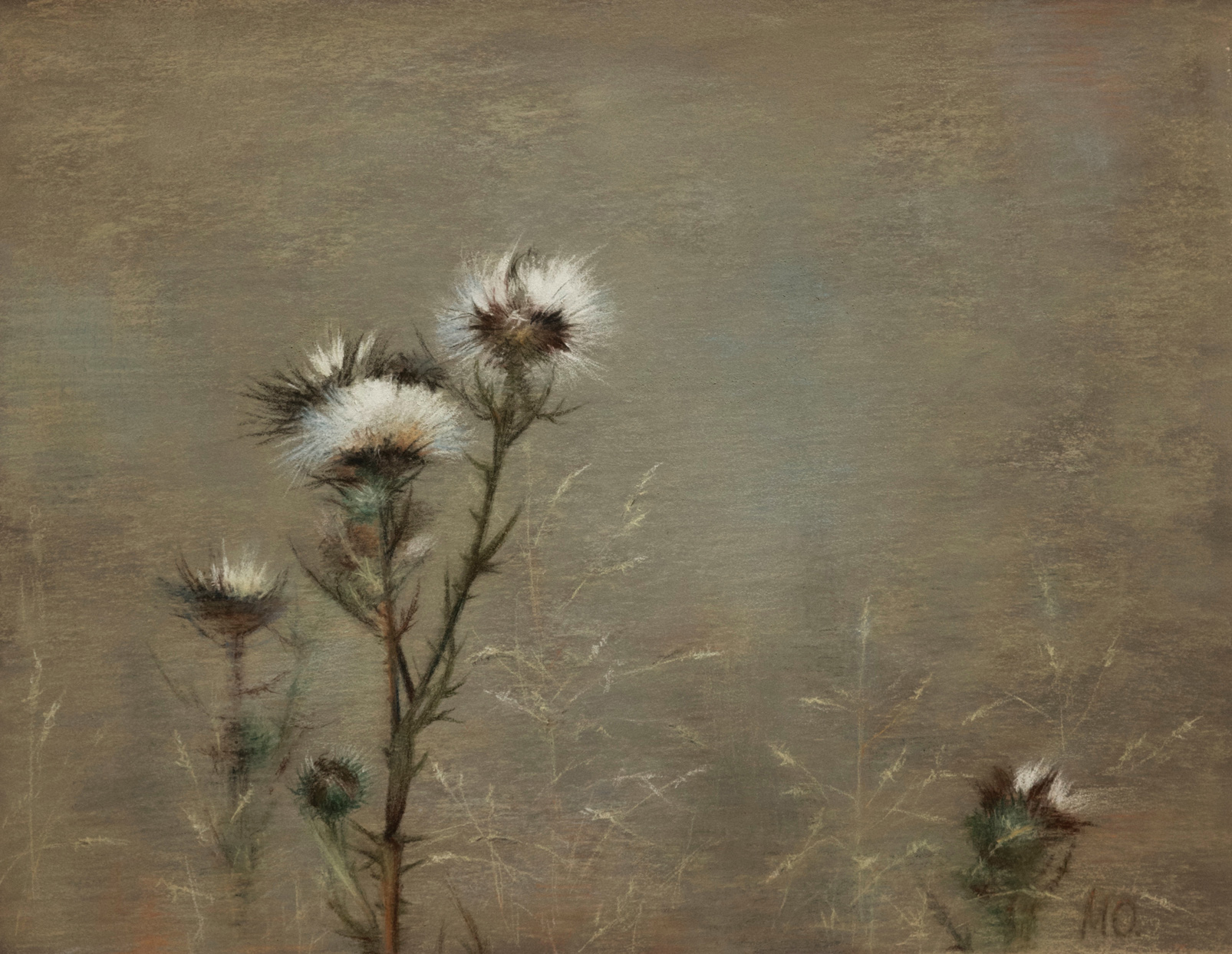Contents
Dennis Miller Bunker, Jessica, 1890, oil on canvas, 26 24 inches (66.67 61.28 cm). Museum of Fine Arts, Boston.
Dennis Miller Bunker studied in Paris with Jean-Lon Grme before returning to paint and teach such students as William McGregor Paxton. A Bostonian, he was influenced by Abbott Henderson Thayer and was introduced to Impressionism through John Singer Sargent.
Copyright 2016 by Juliette Aristides
All rights reserved.
Published in the United States by Watson-Guptill Publications, an imprint of the Crown Publishing Group, a division of Penguin Random House LLC, New York.
www.crownpublishing.com
www.watsonguptill.com
WATSON-GUPTILL and the WG and Horse designs are registered trademarks of Penguin Random House LLC
Library of Congress Cataloging-in-Publication Data
Names: Aristides, Juliette, author.
Title: Lessons in classical painting : essential techniques from inside the atelier / Juliette Aristides.
Description: Berkeley : Watson-Guptill, 2016. | Includes bibliographical references and index.
Identifiers: LCCN 2015041361|
Subjects: LCSH: PaintingTechnique. | BISAC: ART / Techniques / Painting. | ART / Reference. | ART / Techniques / General.
Classification: LCC ND1500 .A645 2016 | DDC 750.28dc23 LC record available at http://lccn.loc.gov/2015041361
Hardcover ISBN9781607747895
Ebook ISBN9781607747901
Sadie Valeri, Message in a Bottle, 2010, oil on panel, 8 10 inches (20.32 25.4 cm). Private collection.
v4.1
a
Juliette Aristides, Portal, 2015, oil on panel, 26 38 inches (66 96.5 cm). Private collection.
For my parents and the poet
Painting is one of the highest means that God choseto make man participate in all the most beautiful and best of what he had ever created.
Giovan Paolo Lomazzo (Idea of the Temple of Painting, translated by Jean Julia Chai)
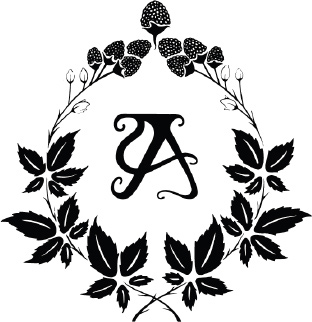

Maria Oakey Dewing, Garden in May (detail), 1895, oil on canvas, 23 32 inches (60.1 82.5 cm). Smithsonian American Art Museum (Washington, D.C.). Image courtesy of the Art Renewal Center (artrenewal.org).
CONTENTS
Eastman Johnson, The Girl I Left Behind Me, circa 1872, oil on canvas, 42 34 inches (106.7 88.7 cm). Smithsonian American Art Museum (Washington, D.C.). Image courtesy of the Art Renewal Center (artrenewal.org).
Born in Maine, Eastman Johnson studied in Dsseldorf, Germany, and later in Paris with Thomas Couture. He was interested in furthering American painting and subject matter. Johnson lived through the Civil War; this painting captures the passion and emotion of a resilient people who faced hardship and separation.
P ROLOGUE
But dont be satisfied with stories, how things
have gone with others. Unfold your own myth, without complicated explanation,
so everyone will understand the passage,
We have opened you.
Rumi (120773)
How do people manage to find a way for themselves in this world? I always thought it a miracle that a person can be born, grow up, leave his or her home, and make a credible life; as subject to chance and fate as a seed from a dandelion, blown through the air, resting where the circumstances perfectly conspire for it to grow. It always appeared equally possible that the wind could just blow the seed forever. To me, the process of successfully growing up never felt inevitable.
During my teenage years I felt that endlessly drifting was a distinct possibility. The ordinary often felt miraculous; things that seemed obvious to others stupefied me. The trees outside my bedroom window appeared slightly different every dayI found the view oddly and endlessly engaging. To my surprise, the road next to my house wasnt black, but violet. I also began to wonder how I, whose only skill was to be easily stumped, could get a jobor if I even wanted a job.
By high school I made friends with my sketchbook. Through my sketchbook I found a means to engage with the world. I could finally start to ground my ideas through art. I brought this notebook everywhere with me. It was a place to record my thoughts; it formed a buffer against the world and a filter for my imagination.
When I graduated, through fate or grace, I found a rigorous art teacher who ran a private studio. I remember struggling. Everything I did seemed to come out painfully wrong. I even had to relearn how to hold my pencil. I recall my teacher yelling that he wouldnt let me paint the back of his garage. Yet, in his studio, not only was it okay to look endlessly at the model or still life, it was required. Suddenly, the rules of the world made sense to me. Though never studious or brilliant academically, I found myself working through the night, relentlessly curious to learn all I could about artistic seeing. I discovered I was not alone, but part of a long tradition.
Maria Olano, In the Meadow, 2014, pastel on paper, 9 12 inches (22.86 30.48 cm). Private collection.


